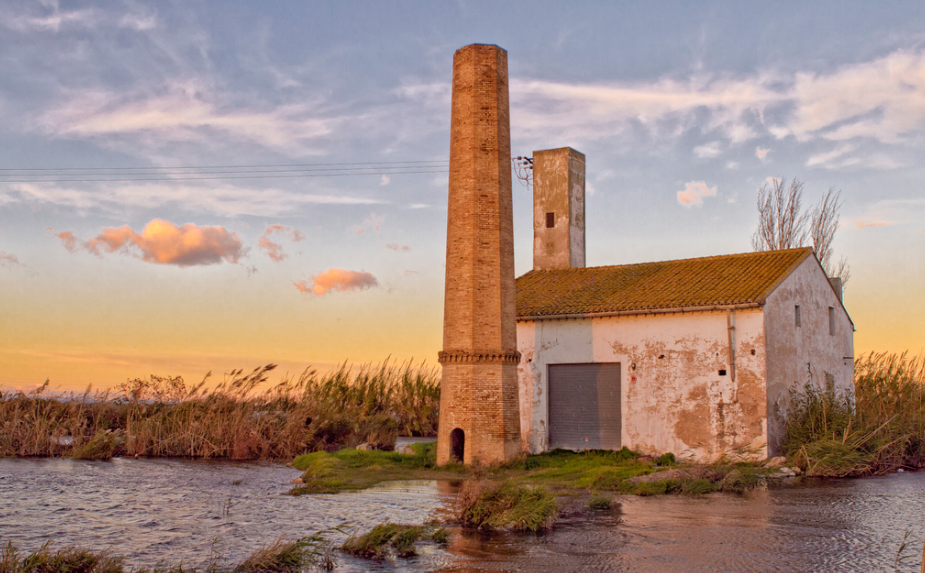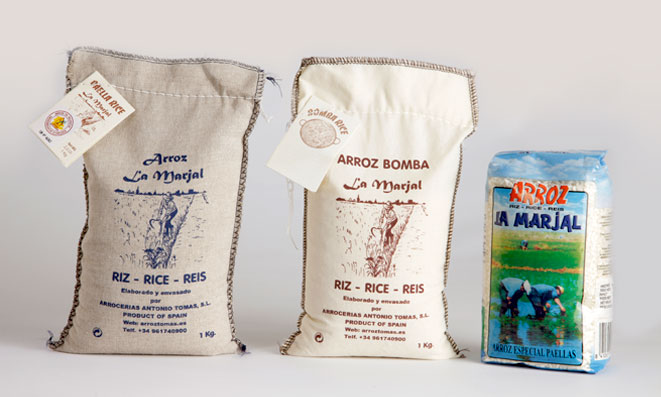
La Albufera, was declared Nature Reserve in 1986, and since 1989 it is recognised as “Wetland of International Importance”.
It is the largest lake in Spain and one of the most important wetlands in the Iberian Peninsula. It’s a place of great ecological interest in which unique species of aquatic birds hibernate. Its rich waters have traditionally served as a support for fishermen and rice farmers, giving rise to a rich gastronomic culture.
Most of La Albufera is occupied with ‘la marjal’. To mention the ‘la marjal’ is to speak of rice fields; 14,100 hectares of La Albufera Nature Reserve are used for this crop. Farmlands, paths, channels and ditches cover 70% of the total protected surface area. The changing landscape of La Albufera throughout the year is due mainly to the variations in the rice fields: green in the summer, blue in the winter and brown in the periods in which the soil is uncovered.
The majority of rice fields are lands gained from La Albufera throughout the years. These lots are called ‘Tancat’. The field soil rises adding more dry muddy earth from somewhere shallow in the lake until levelling it with the neighbouring fields. A small dike was built previously around the lot. All this hard work was done with boats, hoes, esparto baskets and a lot of sweat and effort.
Once the ‘Tancat’ was isolated, it was then possible to control the water level inside it by using mechanical pumps which were initially activated by vapour engines. A proof of this past, are the brick chimneys still kept in some old engines. The majority of engines are currently electric, and the water control is automated.

Together with the ‘Tancats’ which are watered with water from La Albufera are the rice fields of the highlands (la marjal alta) which are irrigated with water from the rivers Turia and Júcar. All of these rice fields are irrigated collectively depending on the rice’s needs.
For generations the best rice has been cultivated in these privileged fields for the already famous paella and other Valencian rice dishes.
All of this agricultural culture has been protected and zealously transmitted from fathers to sons up until today, even improving the care for the environment and the preservation of the natural surroundings.

Since La Albufera was declared Nature Park a set of measures are applied aimed at minimising as much as possible the negative impact that the agricultural activity may cause. These measures establish the need of combining the traditional economic activities with the preservation of the natural ecosystems and their ecological and cultural values.
La Albufera is undoubtedly a privileged landscape to cultivate rice. A large freshwater lake next to the Mediterranean Sea, with a mild and warm climate. Apart from its natural value, it is the symbol of the agricultural and gastronomic culture, tradition and respect for the environment. It is home to quite possibly the finest rice in the world.
If you fanciy visiting the Albufera here you can find all the necessary help such as boat trips around the lake, bike rental and routes etc.
http://www.visitalbufera.com

